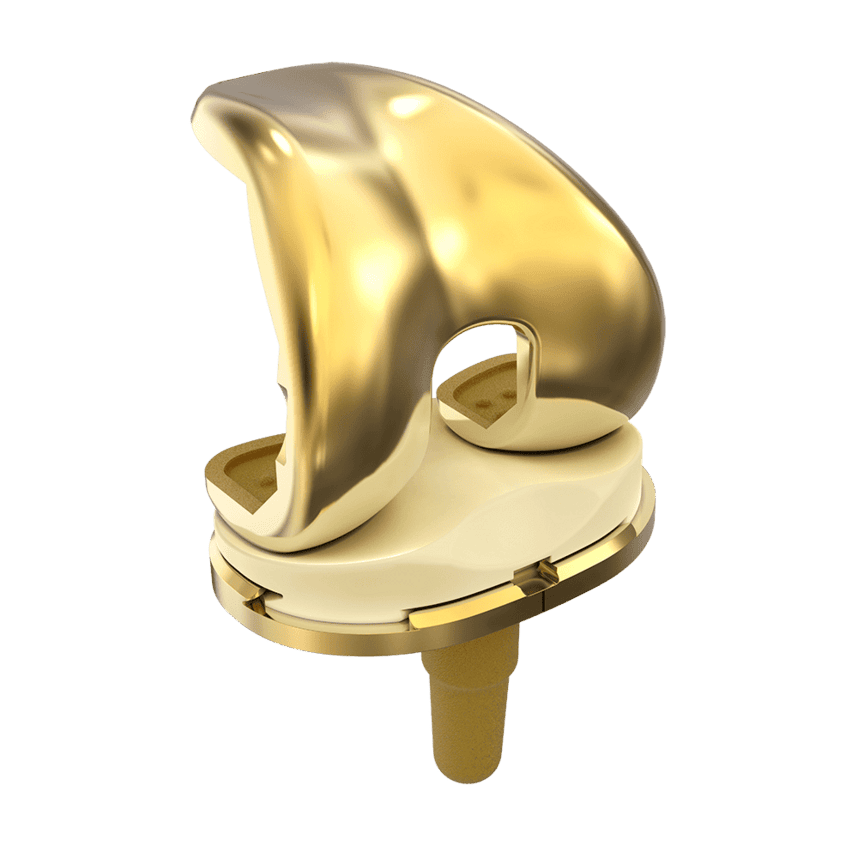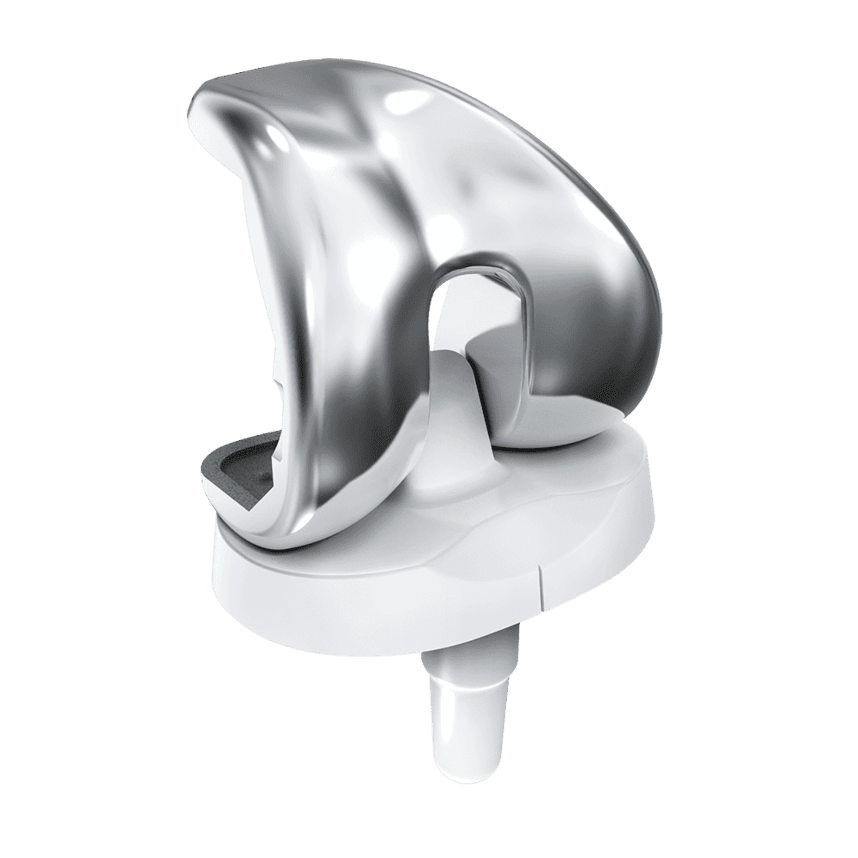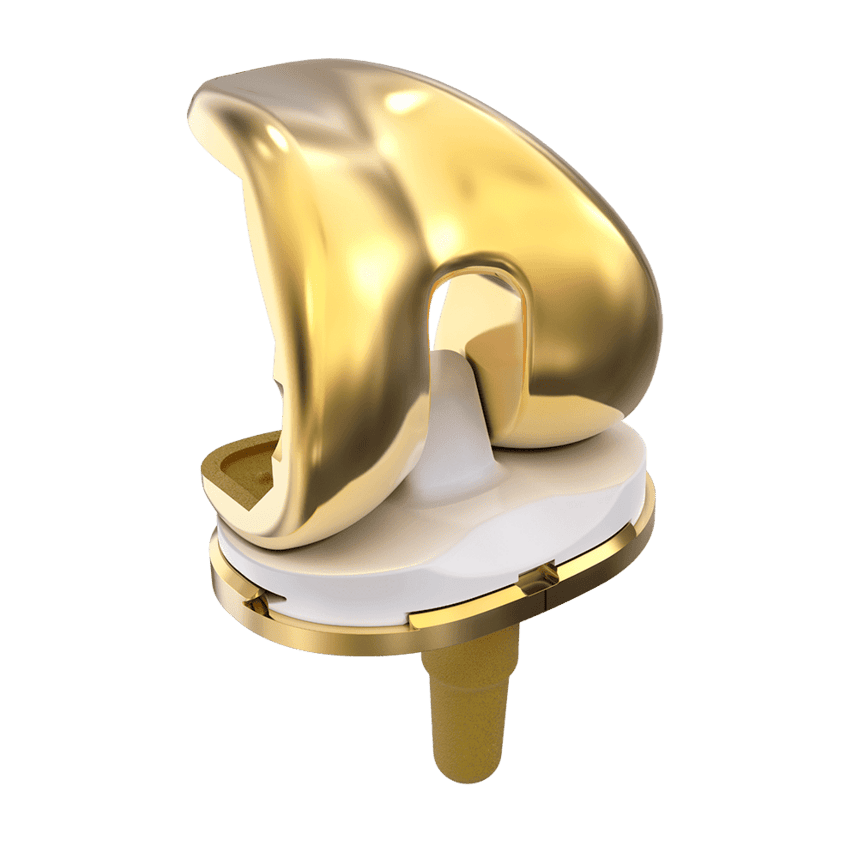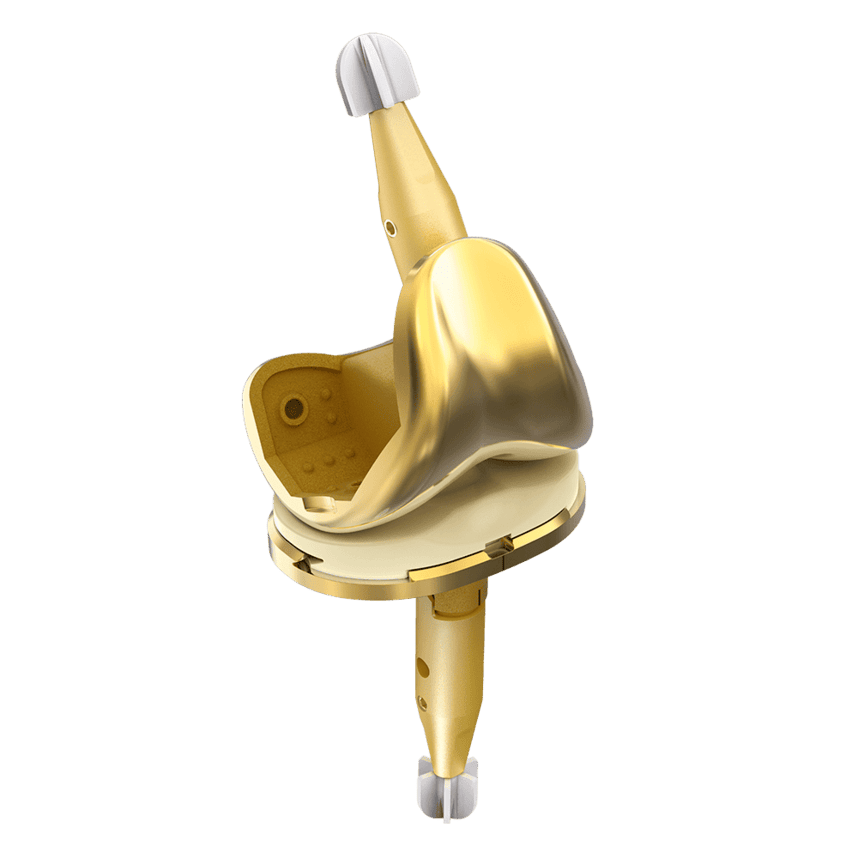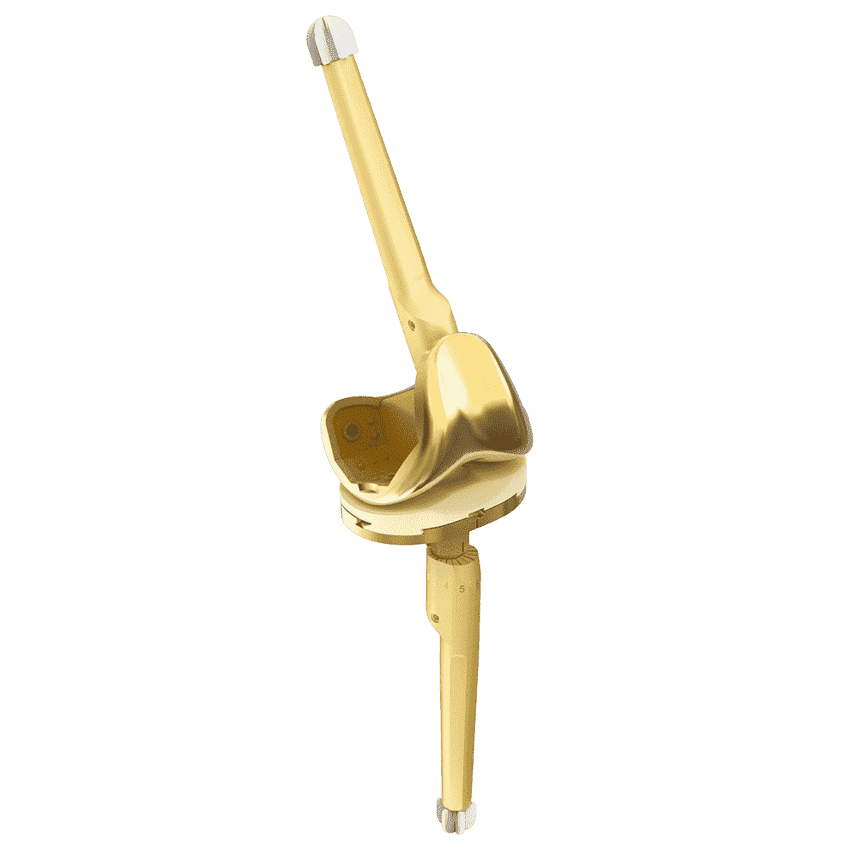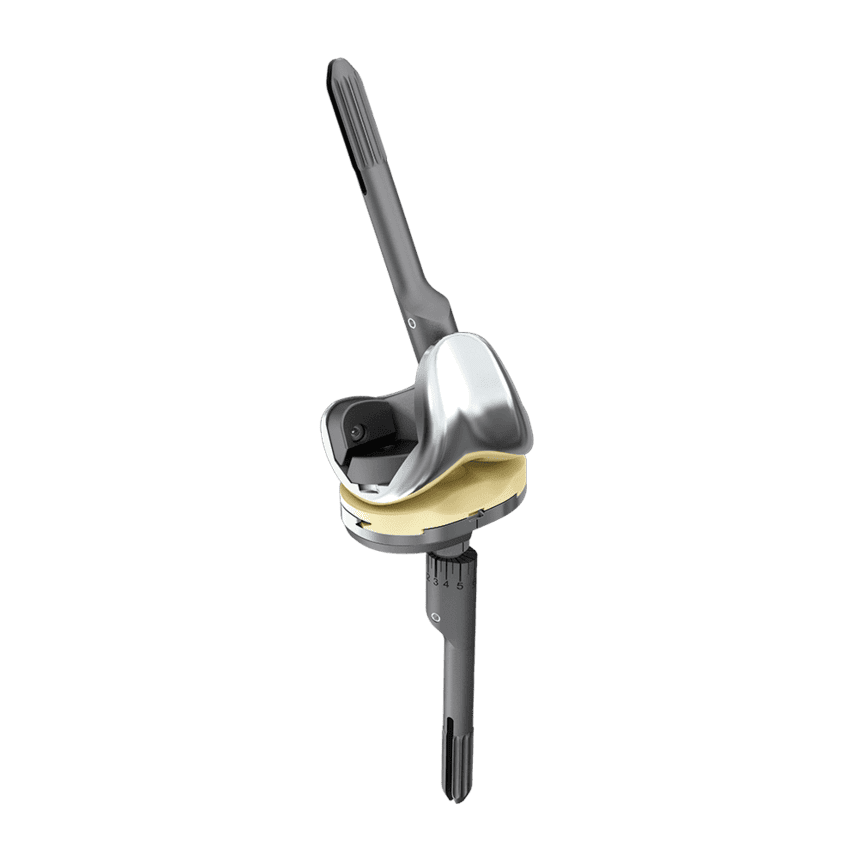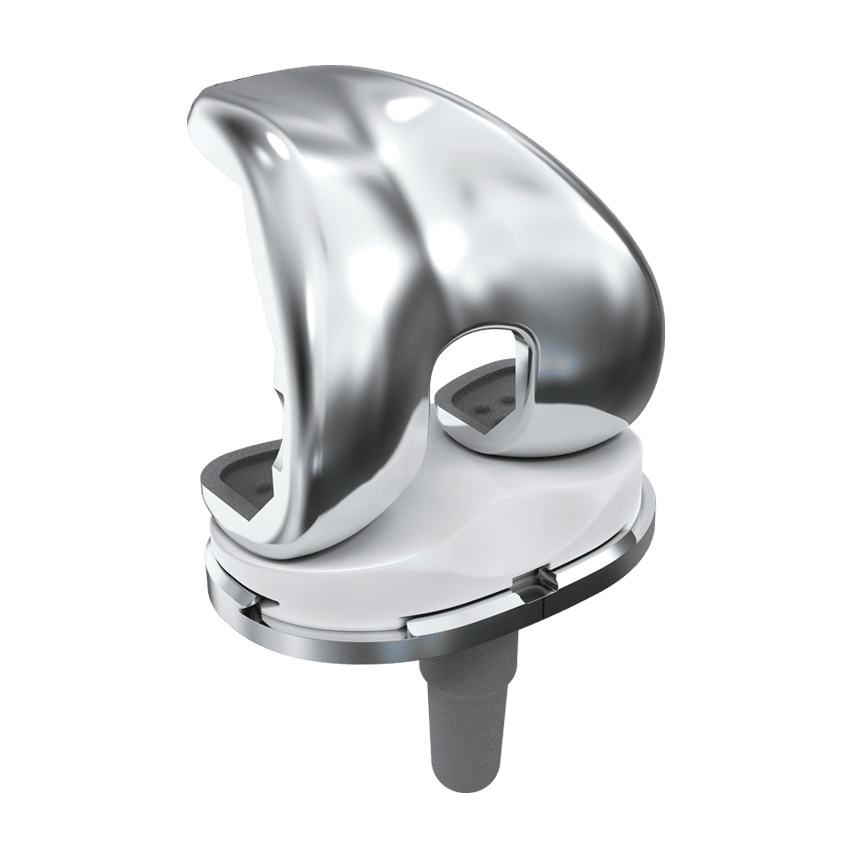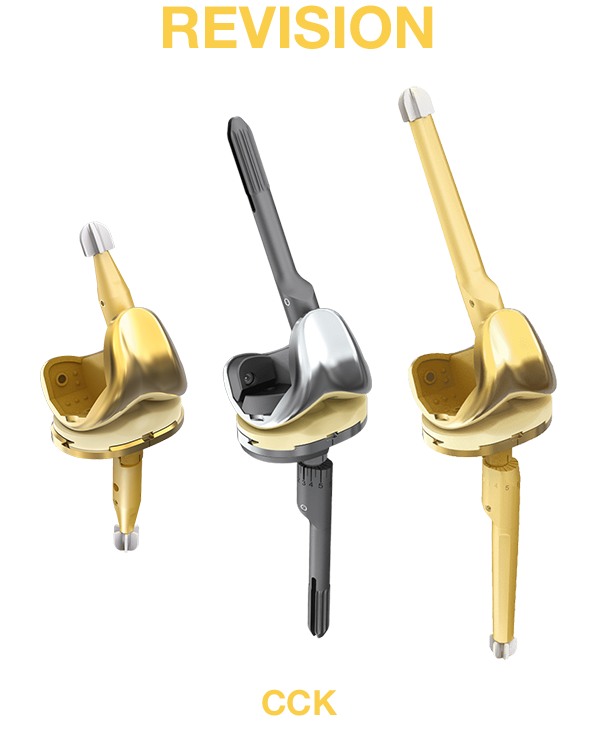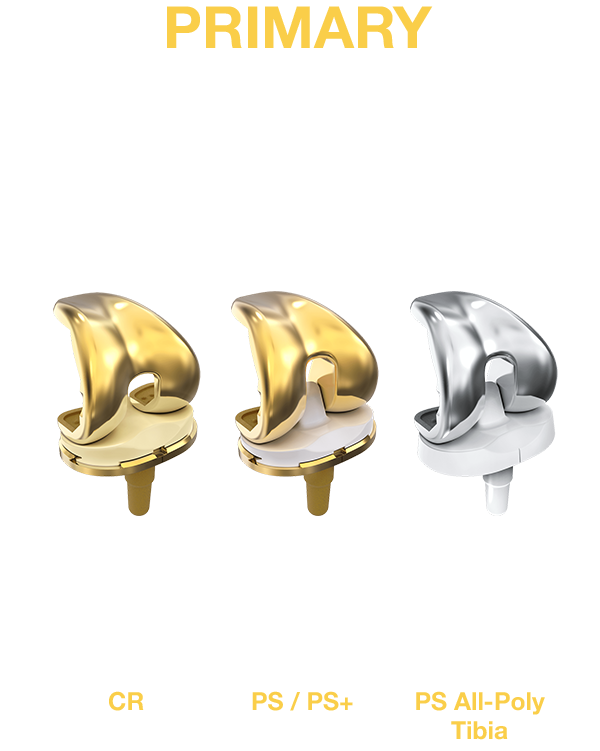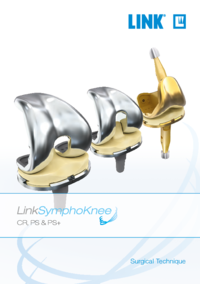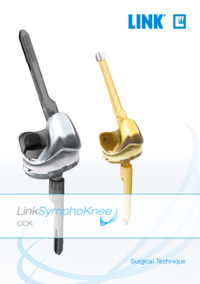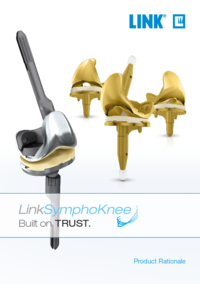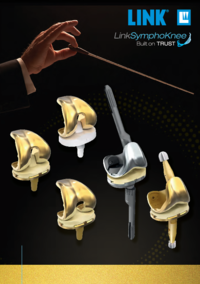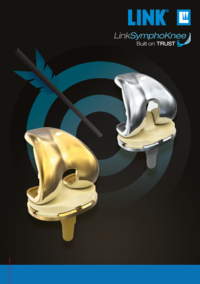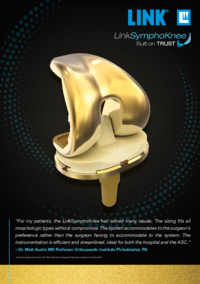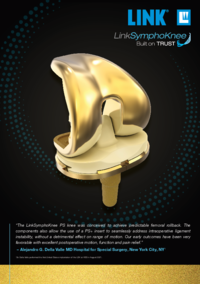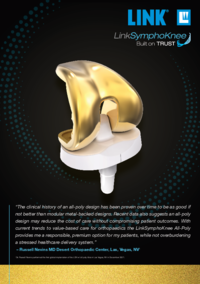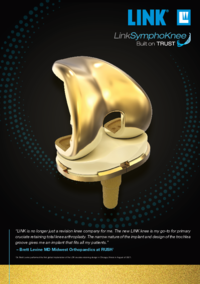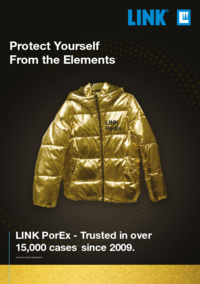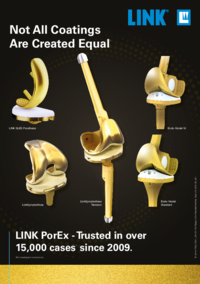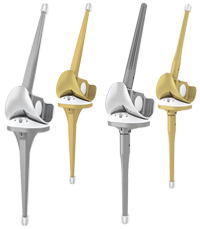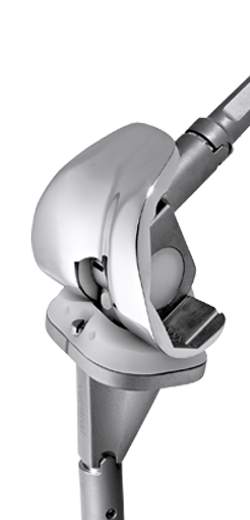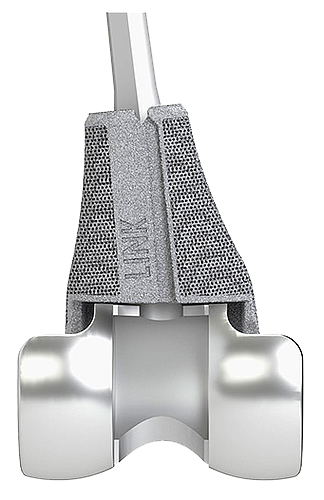For Interesting Patient cases please visit our LinkSymphoKnee Website: www.linksymphoknee.com
The LinkSymphoKnee is a complete system for primary total knee replacement to revision solutions.
Based on decades of experience, Waldemar Link created a comprehensive knee system that covers all aspects of modern total knee arthroplasty from cruciate retaining, posterior stabilized to stemmed revision variants with high-end user-friendly instrumentation.
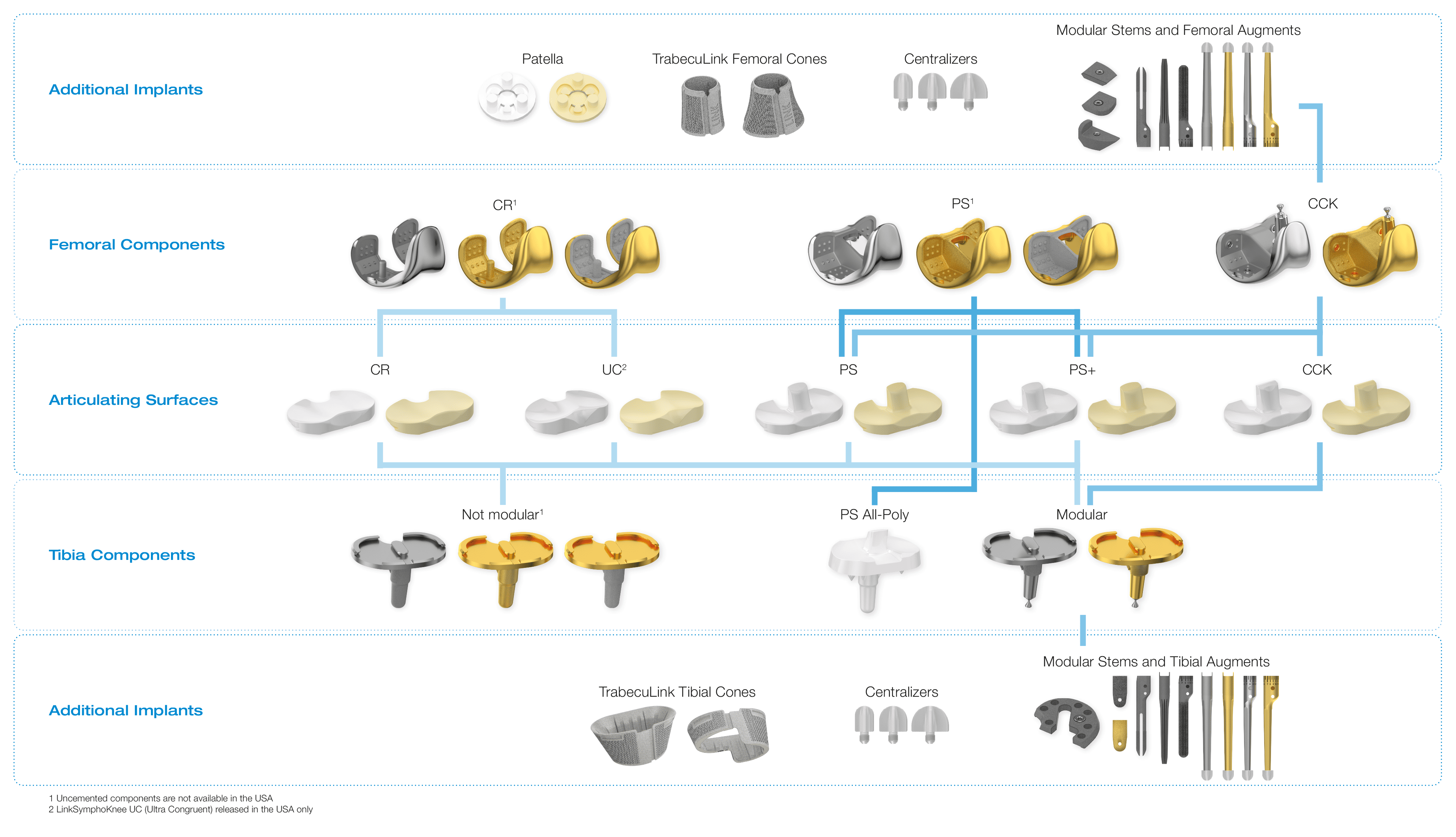
Implant Sizes:
- 14 femoral sizes
- 10 tibial sizes
- 2up-2down compatibility between femoral and tibial components
Instrumentation System
- State-of-the-art, streamlined design
- Enables efficent surgical workflow
- Highly adjustable to user needs
Material Options
- LINK PorEx surfaces:
- Reduce metal ion release
- Enhance tribological properties
- Poly components (articular surfaces and patella):
- UHMWPE
- E-dur Polyethylene (highly cross-linked PE with antioxidant vitamin E)
Versatile Modular System for intraoperative flexibility
The LinkSymphoKnee system is a fixed bearing system with different constraint levels, such as cruciate ligament conserving (CR), cruciate ligament replacing (PS and PS+) and revision options (CCK). The modularity between the components provides a high intraoperative flexibility. All components are available as LINK PorEx versions.


- 4,5° anteriorer Flansch
- Flacher Patellaflansch
- Sanft abnehmender Beugungsradius
- Abgestufte Tiefe der Trochlearinne
- Harmonischer Übergang zwischen den Größen (3 mm a.p.)

- Knochenerhaltende Kastengeometrie
- Dorsaler Kontakt bei 60º-Beugung
- Hohe Position des PS-Zapfens
- SpheroGrip Makrogefüge für eine homogene Knochen-Zement-Implantat-Kontaktfläche und gleichmäßige Krafteinleitung in den Zementmantel3

Weichteilschonender anteriorer Flansch
Breite proximale Trochlea
Lateralisierte Trochlearrinne
Anatomische Nutgeometrie


Soft Tissue Friendly Anterior Flange
Wide Proximal Trochlea
Lateralized Trochlear Groove
Anatomical Notch Geometry

- Bone Conserving Box Geometry
- Post Engagement at 60° Flexion
- High PS Cam Location
- SpheroGrip Macrostructure Provides for a Homogeneous Bone Cement-Implant Interface and Uniform Force Transmission in the Cement Mantle3

- 4.5° Anterior Flange
- Low Profile Patella Flange
- Gently Decreasing Flexion Radius
- Graduated Trochlear Groove Depth
- Harmonic Growth between Sizes (3mm in A/P)


- Um 5º geneigter Zapfen zur Erhöhung der Stabilität
- Posterior Schrägschnitt zur Reduzierung von Impingement
- 0º posteriore Neigung
- Posteriore und mittige Schwalbenschwanz-Verriegelung

- Sprunghöhe PS/PS+: 17 mm
- PS: Uneingeschränkte Rotationsfreiheit
- PS+: Einschränkung 3° IE und VV
- Anteriore Aussparung zur Umhüllung des Patellabands
- Mit Vitamin E versetztes E-Dur Polyethylen1

1. Tolerantes anteriores Profil
2. 3º posteriore Neigung
3. Posteriore und mittige Schwalbenschwanz-Verriegelung
4. Mit Vitamin E versetztes E-Dur Polyethylen1

1. Dualer Krümmungsradius für eine optimierte Kinematik
2. Aussparung für starke Beugung des Patellabands
3. Flacherer mediolateraler Rand an hinterer Facette für Kompatibilität mit variabler Femurposition


1. Dual Radius of Curvature Designed to Optimize Kinematics
2. High Flex Recess for Patellar Ligament
3. Flatter Mediolateral Edge at Posterior Facet for Up Down Femoral Compatibility

1. Forgiving Anterior Profile
2. 3º Posterior Slope
3. Posterior and Central Dovetail Locking Feature
4. E-Dur Vitamin E Infused Polyethylene1

- PS/PS+ Jump Height = 17mm
- PS Constraint Free to Rotate
- PS+ Constraint Constrained 3º IE and VV
- Anterior Recess For Patella Ligament Wrapping
- E-Dur Vitamin E Infused Polyethylene1

- 5º Sloped Post Increases Stability
- Posterior Chamfer Designed to Reduce Impingement
- 0º Posterior Slope
- Posterior and Central Dovetail Locking Feature



1. Robuste mittige und dorsale Schwalbenschwanz-Verriegelung
2. Antirotationssteg zur Führung der Plateauimplantation
3. Abgeflachte ventrale Lippe zur Reduzierung des Plateaueinsetzwinkels
4. Kiel und Rippe zum Schutz vor Rotationskräften

1. Robust Central and Posterior Dovetail Locking Detail
2. Antirotation Island Guides Bearing Implantation
3. Flattened Anterior Lip Designed To Reduce Bearing Insertion Angle
4. Keel and Fin Designed to Protect Against Rotational Forces
Femoral and Tibial Augments


Modularschaft-Optionen



Kompatibel mit LINK FlexiCones
Das LinkSymphoKnee System ist mit den TrabecuLink FlexiCones von LINK kompatibel.

Femur- und Tibia-Augmente


Modular Stems Options



Compatible with LINK FlexiCones
The LinkSymphoKnee system is compatible with LINK’s TrabecuLink FlexiCones.



LinkSymphoKnee - Primary
LinkSymphoKnee - Revision
Offset stem handling
Instruments highlights
Perseus smart cutting guide
Insert Inlay
- Graduell abnehmende Flexionsradius (J-Kurve) zur Reduzierung der Instabilität bei mittlerer Beugung
- Sanfter Übergang in der sagittalen Krümmung
- Höhere Kongruenz in Extension
- Dorsaler Kontakt von PS Post- und Cam-Mechanismus bei 60º-Beugung
- PS Post- und Cam-Mechanismus zur Begrenzung der posterioren Translation der Tibia und Unterstützung des femoralen Rollbacks
- Konkaves Cam-Design zur Vergrößerung des Oberflächenkontakts zwischen Cam und Post und Reduzierung von Druckspitzen


- The gradually decreasing flexion radius (J-curve) reduces mid-flexion instability
- Smooth transition in sagittal curvature
- Higher congruency in extension
- PS Post and Cam mechanism engagement at 60° flexion
- PS Post and Cam mechanism limits posterior tibia translation and facilitates femoral rollback
- Concave Cam design increases surface contact between Cam and Post and reduces pressure peaks.


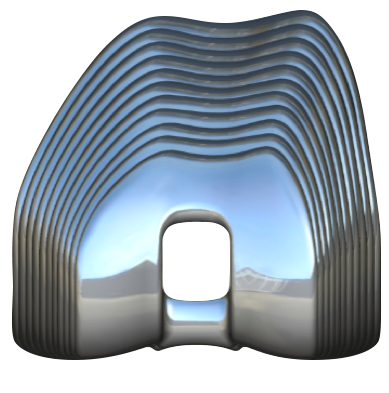
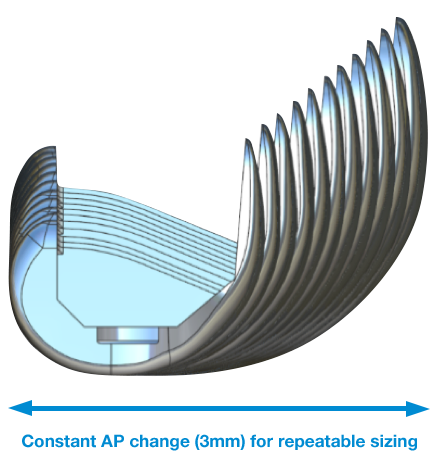
- Homogenes Wachstum von 3 mm in anteriorer Richtung zwischen den Größen
- Weiterhin konstanter hinterer Bereich bei allen posterioren Referenzsystemen
- Homogenous growth of 3 mm from size to size size in anterior direction.
- Posterior aspect constant as usual in all posterior referencing systems



- Winkel des anterioren Patellaflansches von 4,5°
- The anterior Patella Flange angle amounts to 4,5°


- Die einheitliche Stärke aller Femurkomponenten beträgt 9 mm
- Zur Beurteilung des Streck- und Beugespalts wird ein Spacer-Block benötigt.
- The thickness is constant and amounts to 9 mm in all Femoral Components
- One spacer block is required to assess the extension and flexion gap.

Related products
All productsSources
- Crosslinking w/ a 75 kGy gamma radiation dose in air then EtO sterilized.
- E. Oral, „Characterization of Irradiated Blends of Alpha-tocopherol and UHMWPE“, Biomaterials 2005; 26(33):6657-6663.
- E. Oral, „Highly Crosslinked UHMWPE Doped with Vitamin E“, in UHMWPE Biomaterials Handbook, S. M. Kurtz, Ed., Burlington, MA Academic Press 2009.
- S. M. Kurtz, „Vitamin-E-Blended UHMWPE Biomaterials“, in UHMWPE Biomaterials Handbook, S. M. Kurtz, Ed., Burlington, MA Academic Press 2009.
- S. M. Kurtz, „Trace Concentration of Vitamin E Protect Radiation Crosslinked UHMWPE from Oxidative Degradation“, J Biomed Mater Res A 2008; 549-563
- S. M. Kurtz, „The Origins and Adaptations of UHMWPE for Knee Replacement“, in UHMWPE Biomaterials Handbook, S. M. Kurtz, Ed., Burlington, MA Academic Press 2009.
- S. M. Kurtz, „Advances in the Processing, Sterilization, and Crosslinking of Ultra-high Molecular Weight Polyethylene for Total Joint Arthroplasty“, Biomaterials 1999; 20:1659-1687.
- E. M. Brach del Prever, „UHMWPE for Arthroplasty: Past or Future?“, J Orthopaed Traumatol 2009; 10:1-8
- Bader R., Bergschmidt P., Fritsche A., Thomas P., Mittelmeier W. Alternative Werkstoffe und Lösungen in der Knieendoprothetik für Patienten mit Metallallergie. Orthopäde 2008; 37:136-142
- Wear Performance of Sequentially Cross-Linked Polyethylene Inserts against Ion-Treated CoCr, TiNbN-Coated CoCr and Al2O3 Ceramic Femoral Heads for Total Hip Replacement
